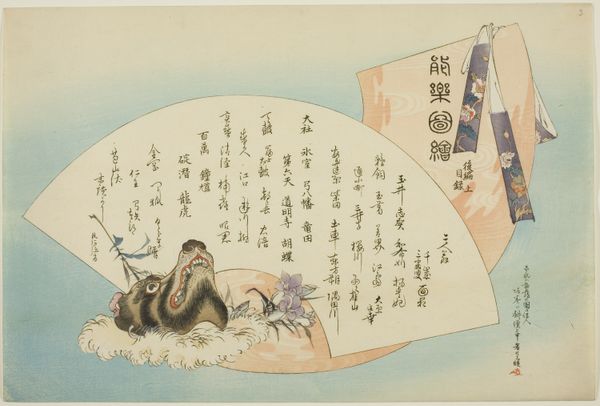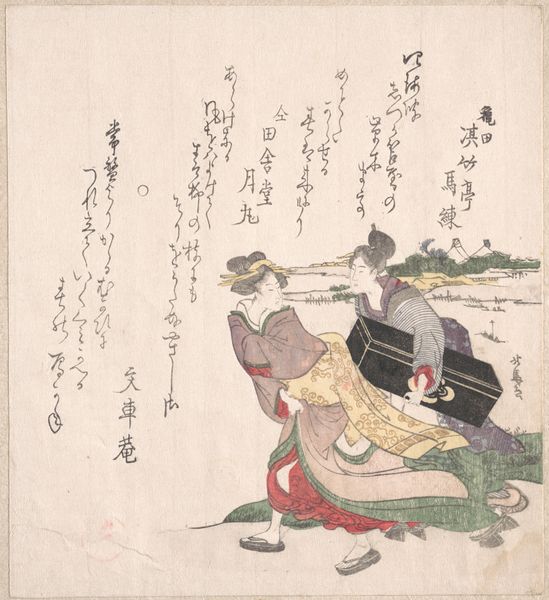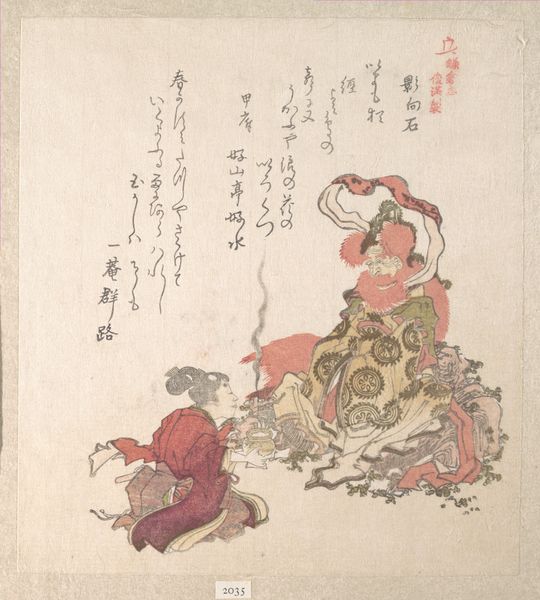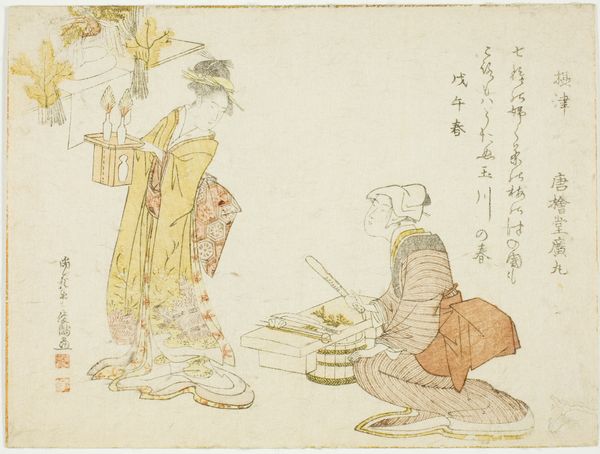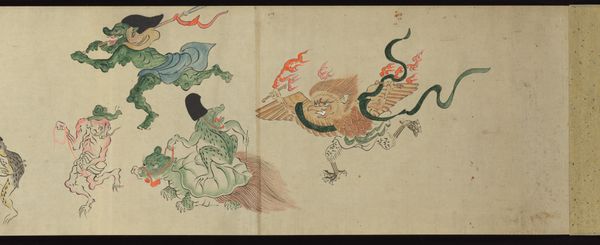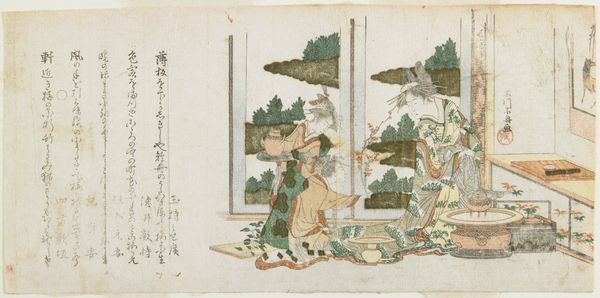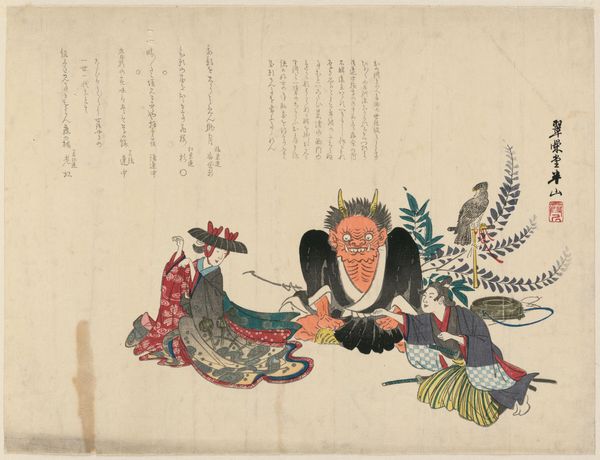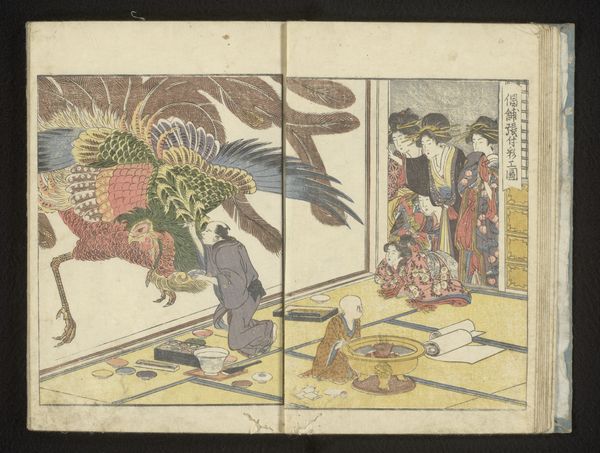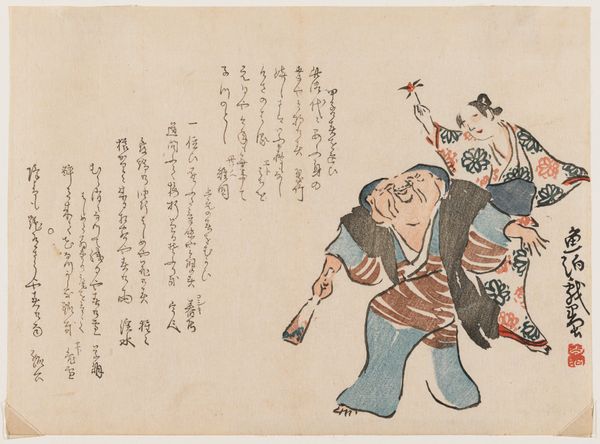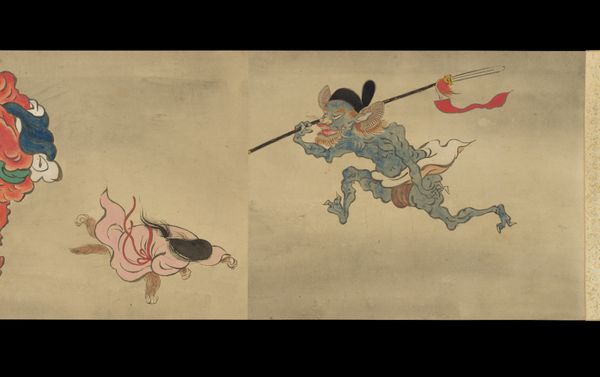
Kyōsai’s Pictures of One Hundred Demons 1890
0:00
0:00
Dimensions: 7 13/16 × 4 3/4 in. (19.8 × 12 cm)
Copyright: Public Domain
Curator: This artwork before us, rendered in ink and watercolor, is plucked from Kawanabe Kyōsai’s enchanting series, "Kyōsai’s Pictures of One Hundred Demons," dating back to 1890. Editor: Well, that’s quite a title! Immediately, I’m drawn in by the whimsical strangeness of it all—the monsters have an unexpected lightness to them. There's a childlike imagination at play that is equally humorous and unnerving. Curator: Indeed. Kyōsai's work often found itself dancing between sociopolitical commentary and the realm of fantasy. His art, though rooted in traditional Ukiyo-e, frequently pushed boundaries. The choice to depict demons, a theme often present in folklore, provided him a fascinating platform for visual satire. Editor: The imagery definitely feels symbolic. Look at the figure riding what appears to be a monstrous boar – its expression so dour! Then we have that strange, cycloptic creature spearing the… umbrella demon? I sense a disruption of order, a playful rebellion against established norms. Curator: You’ve hit on something important there. In 19th century Japan, the political and social landscape was transforming rapidly with the end of the Edo Period, making these demons a projection and personification of fears and uncertainties that many were feeling. Editor: I am fascinated by how each figure feels unique yet strangely familiar. Are they based on traditional folklore? Do these demons derive from any shared beliefs from that era? Curator: Absolutely. Kyōsai would have drawn upon a rich well of yokai stories and popular theatrical tropes, transforming the existing folklore into biting commentary that was as accessible to the common citizen as it was to the educated elite. This accessibility was very key to the public appeal and political significance of Kyōsai’s imagery. Editor: Looking closer at the marks, the ink and color wash is loose but confident, bringing this unique vision into our current space. What was, presumably, familiar once carries into the present through the playful application of the color. The visual symbols, abstracted, become powerful metaphors. It makes me question what cultural fears our own contemporary symbols may represent. Curator: It's a compelling thought! The beauty of engaging with Kyōsai’s art is that he opens this channel for critical reflection by playing with folk narratives. I’m left considering the agency of folklore imagery in shaping social thought then and now. Editor: Absolutely. Art allows for cultural conversation that is truly cross-generational.
Comments
No comments
Be the first to comment and join the conversation on the ultimate creative platform.

